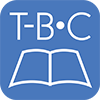By Tyson Thorne

Yesterday we talked about two things modern believer’s need, dedication to our mission and the courage to act on the mission. Paul certainly engaged the culture of the Athenians, but there is another apostle who confronted his culture in a less cerebral fashion, a manner in which some of our readers may find a little more familiar. The apostle Peter was like a force of nature at times, and his two letters are no exception to his confrontational style. While we have already completed a study of 1 Peter, now may be an opportune time to study 2 Peter.
While performing this study I’ll be using an online tool called the Faithlife Study Bible. I will of course be consulting my favorite translation, The New English Translation made available over at net.bible.org, as well as original language tools like the Nestle-Aland Greek New Testament, for the detailed study. That said, I’m going to be conducting my survey in this new online tool and add my study notes to the Bible’s “Notes” feature and share them out to our readers. After our study in 2 Peter is completed I’ll write a review of the Faithlife Study Bible and how well it works for devotional reading, serious study and for group study situations.
For those who would like to join me on this experiment, sign up for the Faithlife Study Bible here and use it in a web browser on your Windows device, or download it to your iOS or Android device (including Kindle reader). To see my notes you will have to also sign up for the Faithlife version of facebook as well. This isn’t necessary as all my notes will be made available to you here at Think-Biblically.com, but if you’re interested in seeing how this Bible study tool works for yourself you are welcome to sign up and connect with me. So without further introduction, here we begin our journey through 2 Peter.
Author and Setting:
The author, as the first verse of the book announces, is Peter, the apostle of Jesus Christ. Peter wrote this epistle in light of his impending death (1.13-.15), and therefore challenged his readers to persevere in truth despite the rising tide of persecution and martyrdom. Being written after his first letter (3.1) and before his death in AD 67, a date sometime between AD 64 and 67 can be affixed. This epistle was written about a year before Jude penned his in 67 AD, and addresses similar issues regarding apostasy.
This decade of Israelite history is fraught with passion and, ultimately, sorrow and defeat. About the time this letter was being penned, Jewish zealots were gaining in force and power and began plotting a rebellion against Rome that would end in disaster a few years later, in 70 AD. Rome would quash the revolt and destroy the Jerusalem temple, reducing it to rubble. Since Christians of this time were still considered an offshoot of Judaism, a concept that was far from the truth, they too were caught up on the fringes of this rising Jewish storm.
The Big Idea:
Christians are to grow in their knowledge of God to combat apostasy as they patiently wait for Christ’s return.
Join us next week as we begin to delve into the teachings of 2 Peter. In the meantime, consider what is different in Peter’s salutation (verses one and two) when compared to most of Paul’s letters.
|
|
